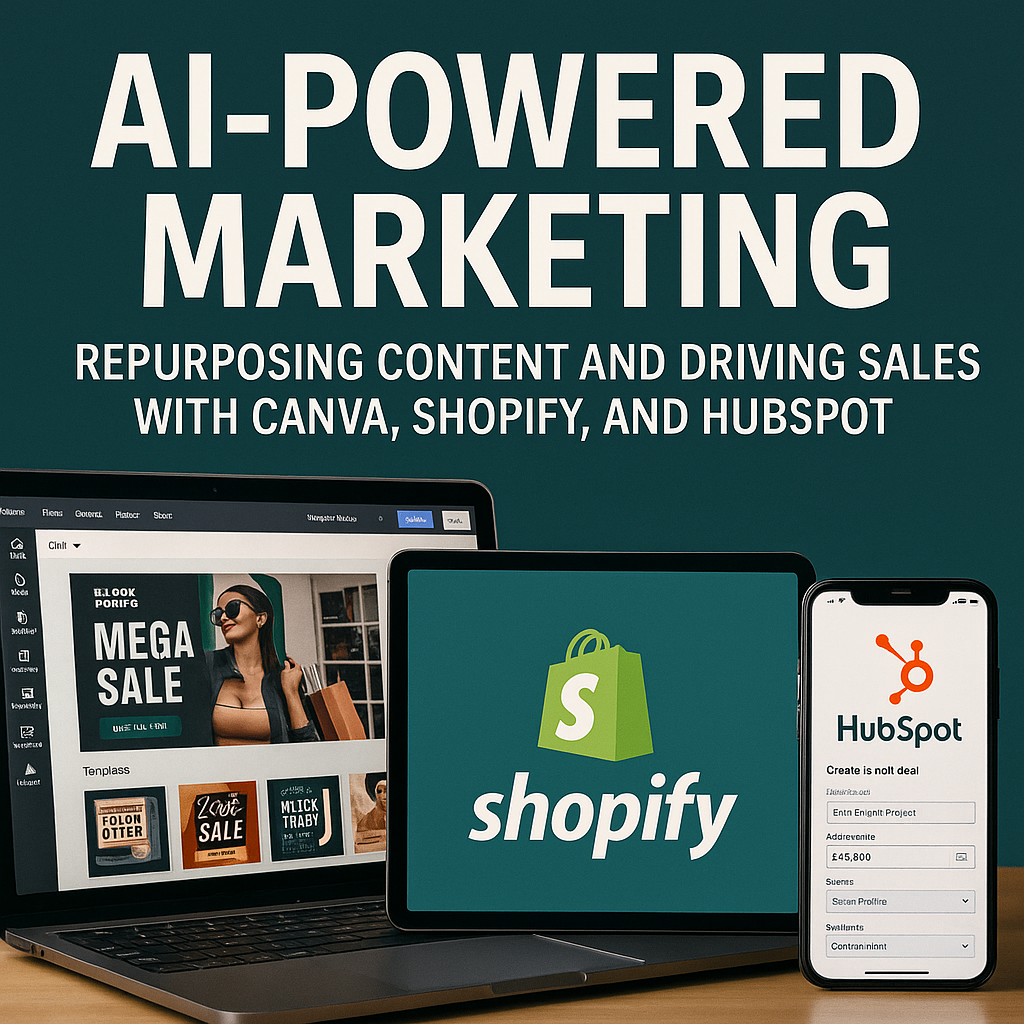The rise of AI in marketing takes a more practical turn this month as tools once reserved for experimentation begin driving measurable business results. August saw brands embrace AI-powered content repurposing to stretch the reach of videos, livestreams, and long-form assets across multiple channels without sacrificing quality. For marketers, this shift means content isn’t just being created faster — it’s being reimagined to fit platform-specific formats, audience behaviors, and campaign goals, all at a scale that manual workflows could never achieve. The strategic impact is immediate: cycle times per asset are shrinking, on-brand consistency is rising, and performance data is informing content pivots in near real time.

That same momentum carried into the launch of Canva’s “Magic Studio,” an expansion of its AI-powered creative suite. With design tools that generate layouts, write copy, edit images, and even produce custom infographics, the platform is positioning itself as an all-in-one creative engine for businesses of all sizes. For B2B marketing teams, Magic Studio’s ability to quickly create client-ready presentations or branded reports removes a bottleneck in campaign execution. For B2C brands, the draw lies in producing a steady stream of fresh, visually polished assets without the lead times or costs typically tied to external design partners.
E-commerce also stepped into the spotlight with Shopify’s debut of Sidekick, an AI assistant built directly into its merchant dashboard. The tool acts as both an analyst and an operator — capable of diagnosing sales trends, suggesting promotional strategies, and implementing changes instantly. It represents a clear signal that AI’s role in commerce is shifting from supportive automation to active decision-making, with implications for how fast merchants can respond to shifts in demand, seasonality, and consumer sentiment.
HubSpot’s release of AI-powered prospecting tools added another layer to the trend. Sales teams can now lean on AI to surface high-priority leads, draft personalized outreach, and sequence follow-up communications based on engagement patterns. In a market where speed-to-contact can make or break a deal, these tools are giving both large and small sales operations a sharper competitive edge. The same technology is being adapted for marketing nurture sequences, ensuring prospects get timely, relevant content without overloading teams with manual email creation.
These advancements connect directly to evolving marketing applications. Social teams are experimenting with AI tools to cut livestreams into short clips optimized for Reels, Shorts, or TikTok, capturing moments that resonate beyond the original broadcast. Email marketers are finding that AI-written nurture sequences can match brand tone while adapting message timing to individual behaviors. And content managers are leaning into AI-generated infographics to simplify data storytelling in blog posts, improving comprehension and shareability in the process.
Best Practice Spotlight
One of the most compelling examples comes from Shopify’s own Sidekick demonstration. In a live showcase, CEO Tobi Lütke walked through a scenario involving a snowsports supply merchant whose sales had dipped from March to July. Sidekick quickly analyzed the store’s historical data, identified minimal snowfall as the likely cause, and produced a month-by-month sales chart to illustrate the trend. When prompted to “put everything on sale,” the AI suggested — and implemented — a 10% automatic discount across the store. This wasn’t a pre-scripted demo of canned answers; it was a real-time blend of business intelligence and operational execution, underscoring how AI can move from insight to action in a single conversation.
Creative Consulting Concepts
B2B Scenario: A mid-sized SaaS provider uses AI repurposing tools to transform its weekly product webinars into segmented tutorial clips for LinkedIn and YouTube. Within six weeks, they see a 28% lift in inbound demo requests, attributed to prospects encountering short, value-packed clips in their social feeds. The risk? Without a content governance check, some clips could go live without updated feature references, causing confusion.
B2C Scenario: A fashion retailer integrates Canva Magic Studio into its seasonal campaign workflow, generating daily outfit inspiration posts from a base set of product photos. Engagement rates on Instagram Stories rise by 22% month-over-month, but the speed of output requires a tighter brand review process to avoid off-brand design experiments slipping through.
Non-Profit Scenario: An environmental advocacy group uses HubSpot’s AI prospecting to identify and segment potential donors, then employs AI-written nurture sequences to send targeted updates about ongoing projects. Donation conversions improve by 15% in the first quarter of use, though the organization must monitor tone carefully to maintain authenticity and trust.
References
1. TechCrunch. (2023, March 22). Canva unveils a series of new features, including several AI-powered tools.
2. Forbes. (2023, March 23). Canva launches ‘Magic’ AI tools for its design software’s 125 million users.
3. Shopify. (2023, July 26). Summer ’23 Edition: 100+ updates that reimagine commerce for the future.
4. TechCrunch. (2023, July 26). Shopify Sidekick is like ChatGPT, but for e-commerce merchants.
5. HubSpot. (2023, March 6). HubSpot CRM introduces new AI-powered tools to boost productivity and save time.
6. Business Wire. (2023, September 5). HubSpot unveils HubSpot AI and new Sales Hub at INBOUND 2023.
Leave a Reply
You must be logged in to post a comment.